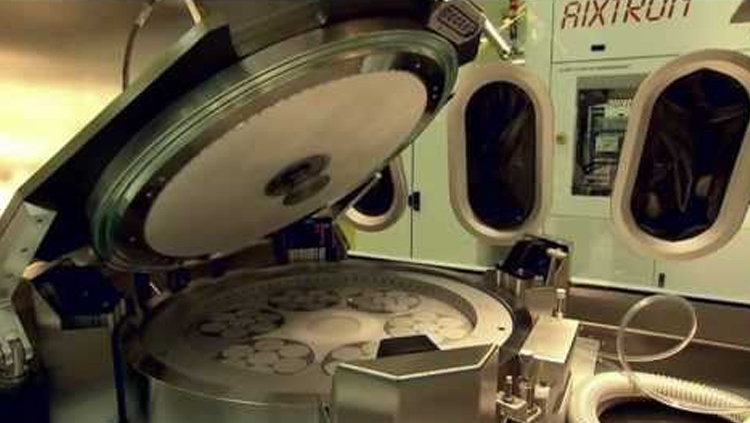Quantum dots boost conversion efficiency of GaAs Solar cells
Dots act as luminescent downshifters
A team of scientists from Taiwan has shown that adding CdS or CdSe quantum dots (QDs) to GaAs solar cells could increase their efficiency by nearly 25 percent. The results were reported in Nature last week.
![]()
GaAs-based single-junction solar cells already hold the photovoltaic world record for the highest power conversion efficiency (PCE) at 28.8 percent. Boosting conversion efficiency in GaAs solar cells further requires reducing surface reflection and using the full solar spectrum, especially in the ultraviolet (UV) range.
High-energy photons can be easily absorbed at short distances, but the generated electron-hole pairs are close to the semiconductor surface, where recombination loss is strong. One way of solving this is to find a way to transform high-energy photons into lower-energy photons in process called luminescent downshifting.
Organic dyes have previously been used as downshifters but dye molecules have poor photon stability and narrow absorption spectrum bands. The researchers from National Chiao Tung University and the Industrial Technology Research Institute, in Hsinchu, Taiwan, used various QDs as the downshifting agents. The resultant hybrid design offers antireflective features to boost photon harvesting at long wavelengths while enhancing the collection of photogenerated carriers in the ultraviolet region.
They measured and analysed several photovoltaic parameters, including short-circuit current density, open circuit voltage, and external quantum efficiency to investigate the performance of the hybrid device. The results, they say, showed that quantum dots effectively enhanced overall power conversion efficiency by as high as 24.65 percent compared with traditional GaAs-based devices. Further analysis of the quantum efficiency response showed that the luminescent downshifting effect can be as much as 6.6 percent of the entire enhancement of photogenerated current.
This is a brief overview of "˜A Highly Efficient Hybrid GaAs Solar Cell Based on Colloidal-Quantum-Dot-Sensitization' by Hau-Vei Han et al, Nature Scientific Reports 4, Article number: 5734 doi:10.1038/srep05734


































